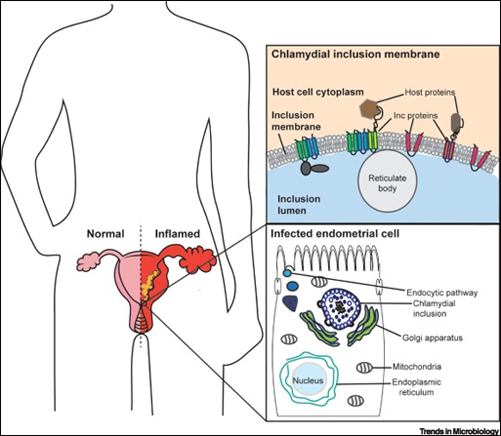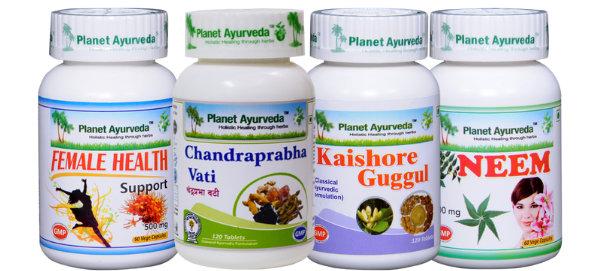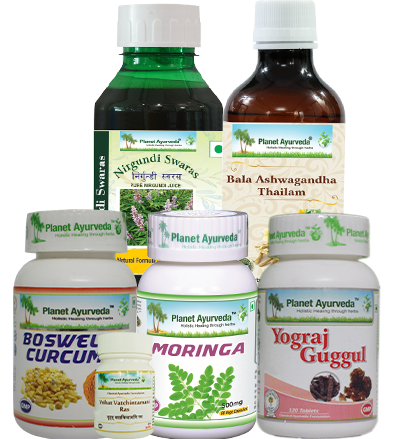Treatment of Chlamydia Trachomatis in Ayurveda ( Sexually Transmitted Disease)
Abstract
Chlamydia trachomatis infection is a form of sexually transmitted disease. This bacterial infection infects both men and women and is slightly worse in women. Both are carriers of the disease. In pregnant women, this bacterial infection can be spread to the fetus, which can cause serious complications in the newborn. Young people before the age of 30 years are more prone to such diseases due to a lack of knowledge and guidance about safe and hygienic sexual practices. Through this article, we will try to throw light on various aspects that can stop the transmission of sexually transmitted diseases. Also, we will discuss various methods that can prevent and treat such STDs. Ayurvedic medicines to treat Chlamydia trachomatis bacterial STD are described later in the article.

Introduction
Chlamydia trachomatis is a sexually transmitted disease caused by the bacteria ‘Chlamydia trachomatis. This bacteria can travel through the vaginal route to the upper fallopian tubes and pelvis and can cause fallopian diseases and pelvic inflammatory diseases. The bacteria is transmitted by vaginal or semen discharge into the genital pathway or by direct touching. This is one of the most common sexually transmitted infections among young adults. Untreated STDs due for any reason can cause more serious outcomes including infertility, prostate gland infection in males, infection in newborns in pregnant women, reactive arthritis, etc. Regular screening could prevent the spread of infection to more extent.
Ayurvedic Aspect
In Ayurveda, various sexually transmitted diseases are described that have different causes and routes. The Chlamydia trachomatis is Pitta dosha dominant tridoshaj vyadhi that is caused by a causative agent said as bahya Krimi. The disease infects the lower genitals and spreads to the upper body through the genitals route. Unprotected and unhygienic sex with multiple partners is a listed cause of this disease. Many herbal remedies are explained to the patients to cure this disease. Recovery from the disease does not claim that the bacteria cannot infect the person again. Proper precautionary methods should be continued while having sexual contact to avoid the recurrence of such STDs.
Causes
Chlamydia trachomatis is a bacterial disease caused by the bacteria “Chlamydia trachomatis”. The bacteria is transmitted through sex. Oral, vaginal, or rectal causes transmission of bacteria to a particular region.
The Risk Factors for the Transmission of Infection Could Be
- Sexual intercourse without condoms
- Multiple sex partners
- Ignoring the symptoms
- Unhygienic sexual practice
Symptoms
Symptoms of Chlamydia trachomatis infection include
- Pain while urinating
- Discharge from genitals
- Penile discharge
- Vaginal discharge
- Foul-smelling discharge
- Pain in genitals
- Pus in urine
- Inflammation of the pelvis, cervix, genital tract
- Itching gang d burning sensation in the genital area
- Abnormal vaginal bleeding
Other Symptoms can occur according to the coitus preferences of the person.
The Symptoms Could Be
- Eye infection- conjunctivitis, pain, redness
- Throat infection- pain, swelling, irritation
- Infected rectum- pain, abnormal discharge, abnormal bleeding
Diagnosis
The diagnosis of Chlamydia trachomatis is done by knowing the symptoms.
- The sexual history is taken
- Urinalysis
- Cell culture
- Swab test
- A nucleic acid amplification test is best to diagnose Chlamydia trachomatis infection
Treatment
The broad-spectrum antibiotics are used in the treatment of Chlamydia trachomatis along with-
- Avoid any sexual activity during the course
- Using condoms
- Regular screening for other STDs is done
Herbal Remedies by Planet Ayurveda for the Treatment of Chlamydia Trachomatis
Planet Ayurveda has many Ayurvedic remedies to offer for the treatment of sexually transmitted diseases. These remedies are purely natural and do not have any adulteration. The medicines prepared by Planet Ayurveda are free from any type of chemicals and toxins. The adulteration is not at all tolerated by the standard matching technicians of the company. The medicines recommended for the management of Chlamydia trachomatis are explained with their benefits below
PRODUCT LIST
- Female Health Support
- Kaishore Guggul
- Chandraprabha Vati
- Neem Capsules
Product Description
1. Female Health Support
These Capsules are prepared from the natural extracts of marvelous herbs Ashoka (Saraca asoka), Lodhra (Symplocos racemosa) and Shatavari (Asparagus racemosus). Chlamydia trachomatis shows worse impacts on women’s genitals. This bacteria travels along the genital pathway and infects the whole genital tract including the fallopian tubes, uterus, and pelvis. These capsules are designed to maintain the female reproductive organs healthily and fight against any disease showing a hazardous impact on them. This product is helpful in all female problems including pregnancy but should be taken under the strict supervision of the doctor.
Dosage– Take 1 capsule twice a day after meal with normal water.
2. Kaishore Guggul
This ayurvedic formulation has guggul as an active ingredient and thus treats various ailments. The medicinal properties of these tablets help to overcome the disease symptoms in the patient suffering from Chlamydia trachomatis. This tablet formulation has multiple properties such as anti-bacterial, anti-diabetic, anti-inflammatory, anti-flatulent, anti-microbial, analgesic, adaptogenic, etc. These all properties directly or indirectly will help to ease the abnormal symptoms and manage the condition of Chlamydia trachomatis.
Dosage- Take 2 tablets twice daily after meal with normal water.
3. Chandraprabha Vati
This classical ayurvedic preparation treats all the disorders related to the urinary tract or genital system. It has antimicrobial properties that will stop the replication of harmful bacteria in the body of the patient. In pregnant women, the tablets must be taken under the guidance of a doctor only. This tablet contains herbs such as- Shilajit (Asphaltum), karpoor (Cinnamomum camphora), Mustak (Cyperus rotundus), Yavakshar (Potassium carbonate), Saindha-suvarchal-vida lavana (Rock-sodium-black salt), Dalchini (Cinnamomum zeylanica), etc. Also, these tablets have cooling properties that will manage the excess pitta dosha in the body of the patient and ease the abnormal symptoms of the disease such as urine frequency, painful urination, pus, bleeding from the genital tract, inflammation of genital parts, etc.
Dosage– Take 2 tablets twice daily after meal with normal water.
4. Neem Capsule
Neem capsules of planet Ayurveda contain pure natural extracts of the herb Neem (Azadirachta indica). Neem is tremendously famous for its anti-microbial, anti-inflammatory, and blood purification properties. These capsules will kill the bacteria and clean the genital area from within. These capsules will reduce the infection, pus, inflammatory, and painful symptoms due to Chlamydia trachomatis infection.
Dosage- Take 1 neem capsule twice daily after meal with normal water.
Contact Planet Ayurveda Support Team to provide you the costing / ordering and delivery information at – costing.planetayurveda@gmail.com or Call at 0172-521-4040 (India), +91-172-521-4040 (Outside India) or Whatsapp at (+91) 9915-593-604.
Conclusion
It is necessary to seek Treatment for Chlamydia trachomatis as soon as possible to avoid unnecessary produced complications that leave worse impacts on the reproductive system. You can treat the infection in natural ways through Ayurveda medicines. For more information related to diet and lifestyle modifications in STDs like Chlamydia trachomatis do visit us at www.planetayurveda.com to book your physical or online appointment with our doctor.





